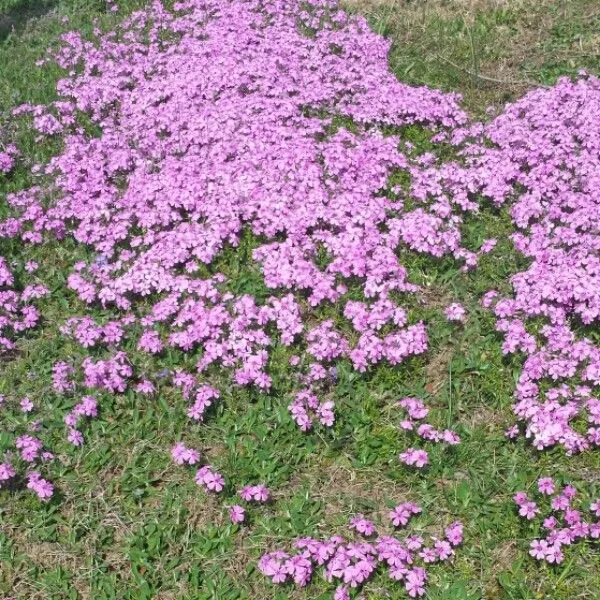
Author: (L.) Jacq.
Bibliography: Enum. Stirp. Vindob.: 242 (1762)
Year: 1762
Status: accepted
Rank: species
Genus: Silene
Vegetable: False
Observations: Subarctic & Subalpine Northern Hemisphere
The Cushion-pink, scientifically known as Silene acaulis, is an intriguing and visually appealing plant that belongs to the Caryophyllaceae family. First described in 1762, this plant thrives in subarctic and subalpine regions across the Northern Hemisphere, making it a true testament to the beauty and resilience of nature in harsh climates.
Silene acaulis, commonly referred to as Cushion-pink, is renowned for its unique growth habit. It forms tight, dense mats or cushions, which not only contribute to its distinctive appearance but also provide it with a survival advantage in its native cold and rocky environments. These cushions serve to insulate the plant against extreme temperatures and reduce water loss, enabling it to endure the rigors of its native habitats.
The plant produces small, pink flowers that can dot the surface of the cushion, offering a vivid contrast to the green foliage. These blooms typically emerge in clusters and are a key feature that makes the Cushion-pink highly attractive to botanists and plant enthusiasts alike.
As a member of the Caryophyllaceae family, Cushion-pink shares many characteristics with other species in this group, which are often adapted to survive under harsh conditions with poor soil nutrients. The structural and physiological adaptations of Silene acaulis highlight its evolutionary success in some of the world’s most challenging environments.
In summary, the Cushion-pink (Silene acaulis) is a remarkable subarctic and subalpine plant that combines beauty with resilience. Its ability to thrive in some of the most unforgiving terrains of the Northern Hemisphere speaks to its remarkable adaptability and the intricate balance of nature’s designs.
Eng: cushion-pink, moss campion, cushion pink
Deu: stengelloses leimkraut, stängellose lichtnelke, stängelloses leimkraut
Swe: fjällglim
Fra: silène acaule
Sme: duottarsillan, duottarluffellaš
Cym: gludlys mwsogl, gludlys mwsoglog, gludlys mwsoglyd
En: Cushion-pink, Moss campion, Cushion pink catchfly, Moss champion, Cushion pink
Bg: Безстъблено плюскавиче
Ca: Silene acaule
Cs: Silenka bezlodyžná
Nl: Stengelloze silene
Et: Varretu põisrohi
Fi: Tunturikohokki
Fr: Silène acaule, Silène sans tiges
De: Stängelloses Leimkraut, Stengelloses Leimkraut, Stängellose Lichtnelke, Kalk-Polsternelke
Is: Lambagras
Ga: Coireán caonaigh
It: Silene a cuscinetto
Se: Duottarsillan, Duottarluffellaš
No: Fjellsmelle
Pl: Lepnica bezłodygowa
Pt-br: Alfinetes
Ro: Iarbă roșioară
Sr: Сједећа пушина
Sk: Silenka bezbyľová
Es: Clavel rastrero, Látigo del diablo, Silene sin tallo
Sv: Fjällglim
Uk: Смілка безстебла
Cy: Gludlys mwsoglog, Gludlys Mwsogl, Gludlys Mwsoglyd
Taken Jul 16, 2018 by Marie Delerce (cc-by-sa)
Taken Aug 14, 2020 by Clara Wagner (cc-by-sa)
Taken Apr 14, 2017 by Beverly Patrick (cc-by-sa)
Taken Jul 17, 2017 by calcagno (cc-by-sa)
Taken Jun 21, 2018 by Daniele Boggiani (cc-by-sa)
Taken Jun 18, 2019 by Llandrich anna (cc-by-sa)
Taken Jun 18, 2019 by Llandrich anna (cc-by-sa)
Taken May 30, 2020 by Piotr zimnicki (cc-by-sa)
Taken Apr 14, 2017 by Beverly Patrick (cc-by-sa)
Taken Apr 14, 2017 by Beverly Patrick (cc-by-sa)
© copyright of the Board of Trustees of the Royal Botanic Gardens, Kew.
© copyright of the Board of Trustees of the Royal Botanic Gardens, Kew.
© copyright of the Board of Trustees of the Royal Botanic Gardens, Kew.
Taken Jul 10, 2015 by Tela Botanica − Yoan MARTIN (cc-by-sa)
Taken Jul 13, 2019 by Hugo Padilla (cc-by-sa)
Taken Jul 30, 2018 by Denis Bastianelli (cc-by-sa)
Taken Jun 14, 2022 by doune34160 (cc-by-sa)
Taken Jul 13, 2019 by Hugo Padilla (cc-by-sa)
Taken Jul 22, 2019 by Xavier Bourasseau (cc-by-sa)
Taken Aug 26, 2020 by Alain Bigou (cc-by-sa)
Taken Aug 15, 2018 by Daniel Barthelemy (cc-by-nc)
Taken Aug 15, 2018 by Daniel Barthelemy (cc-by-nc)
Taken Nov 3, 2016 by Yoan MARTIN (cc-by-sa)
Taken Aug 14, 2022 by margarida vila (cc-by-sa)
Taken Jun 30, 2016 by Szabolcs Frater (cc-by-sa)
Taken Jun 24, 2017 by Yoan MARTIN (cc-by-sa)
Taken Aug 14, 2022 by margarida vila (cc-by-sa)
Taken Aug 14, 2022 by margarida vila (cc-by-sa)
Growth habit: Forb/herb
Ph maximum: 7.0
Ph minimum: 6.5
Light: 9
Atmospheric humidity: 3
Soil nutriments: 1
Family: Myrtaceae Author: (F.Muell.) K.D.Hill & L.A.S.Johnson Bibliography: Telopea 6: 402 (1995) Year: 1995 Status:…
Family: Rubiaceae Author: Pierre ex A.Froehner Bibliography: Notizbl. Bot. Gart. Berlin-Dahlem 1: 237 (1897) Year:…
Family: Sapindaceae Author: Koidz. Bibliography: J. Coll. Sci. Imp. Univ. Tokyo 32(1): 38 (1911) Year:…
Family: Asteraceae Author: A.Gray Bibliography: Pacif. Railr. Rep.: 107 (1857) Year: 1857 Status: accepted Rank:…
Family: Fabaceae Author: Medik. Bibliography: Vorles. Churpfälz. Phys.-Ökon. Ges. 2: 398 (1787) Year: 1787 Status:…
Family: Aspleniaceae Author: (Cav.) Alston Bibliography: Bull. Misc. Inform. Kew 1932: 309 (1932) Year: 1932…